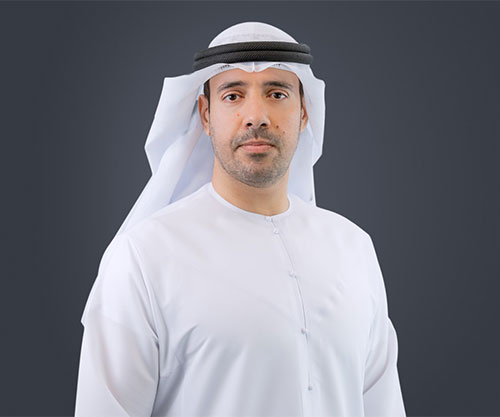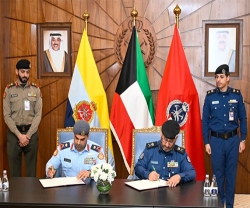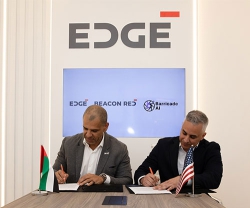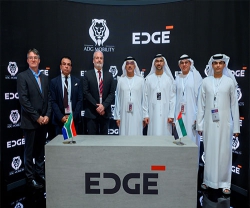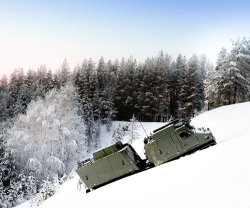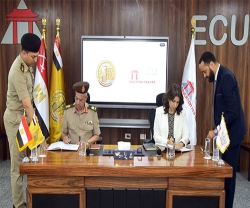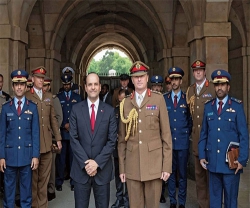By Omar AlZaabi, President of Trading & Mission Support, EDGE and CEO, EARTH
Militaries often use specialised technology to improve target identification, assess threats from a specified distance, and target monitor in different weather conditions.
Electro-optics and Infrared (EO/IR), a branch of technology that uses materials and devices to manipulate, detect and transmit information through light interaction, plays a vital role for surveillance in the defence industry, enabling the development of advanced weapons and sensors that enhance situational awareness, target detection and tracking, and communication systems. Airborne EO/IR systems, used for air, naval, and land systems surveillance and targeting, comprise of optic sights, night vision systems inspection systems, and helmet-mounted displays.
Military EO/IR systems have more advanced capability uses, such as artificial intelligence, hyperspectral imaging and light detection, ranging and enabling target identification, and assessing threats from specified distances in different weather conditions. EO/IR technology secures unprecedented, real-time situational awareness and increases platform survivability advantages over those threats.
EO/IR has the ability to acquire and hold a steady image, motion systems even during the turbulence of aircraft in flight and extreme conditions encountered at sea and extreme terrain condition of land vehicle movement. This technology makes an immense difference to on-ground military operations and for individual soldiers and security professionals.
To cater the demanding market and to facilitate regional stakeholders, a revolutionary Electro-optical and Infrared (EO/IR) centre is essential in Gulf region to accelerate the demands of the defence industry and the armed forces; a successful EO/IR centre must possess several key elements that contribute to this local and regional support.
Asset management and servicing of EO systems is a critical aspect of the operations of an electro-optics centre, especially when approaching regional customers. Asset management involves the proper tracking, monitoring, and maintenance of EO systems to ensure that they are functioning correctly and are available when needed. An electro-optics centre requires a robust asset management system that allows them to identify and locate specific assets, track their condition, and schedule routine maintenance or repairs as needed.
Additionally, these centres must have a team of skilled technicians, engineers and subject material experts who provide prompt and reliable servicing of EO systems, both at an EO centre and at their end users’ facilities. This includes regular calibration and testing of the systems to ensure they are performing optimally and providing accurate data. These experts also must possess knowledge of defence technology and its applications to enable the development and delivery of products, meeting unique defence industry requirements. Proper asset management and servicing of EO systems are critical to maximizing their lifespan and ensuring they continue to meet the needs of the customers they serve.
Beyond a skilled team, electro-optics centres need state-of-the-art facilities that support research, development, and production. These facilities should be equipped with the latest technologies, including advanced software, hardware and instrumentation, to enable the team to design, develop, and test electro-optical devices and systems.
For example, the facility should have Environmental Stress Screening (ESS), LOS testing, and simulation capabilities that test EO/IR systems before and after repairs. Facilities should additionally have clean rooms and laser testing rooms equipped with electrostatic discharge capabilities, as these are critical requirements that ensure products are repaired under highest quality international and military standards.
The facilities must also be adaptable to meet the changing needs of the defence industry, with the ability to scale up production, and to upgrade and maintain existing systems to keep pace with technological advances, including transfer of technology (TOT) and transfer of knowledge (TOK).
In this way, an electro-optics centre should be capable of providing rapid response servicing to its customers. This means having the ability to quickly diagnose and repair any issues with EO systems, minimising downtime and ensuring enhanced asset availability. The EO centre requires a well-defined and streamlined process for addressing urgent requests for servicing, including a short repair turnaround time (RTAT) for repairs. By providing rapid response servicing and a short RTAT, the centre can enhance defence operability, as well as increase the availability and reliability of EO systems, reducing ownership costs of additional standby systems and contributing to the overall success of militaries and security professionals..
Comprehensive spare parts provisioning is an often overlooked, yet critical aspect of an electro-optics centre’s operations. The centre must maintain an extensive inventory of spare parts, including components and subsystems, ensuring that EO systems can be quickly repaired or replaced when necessary. An EO repair centre needs a sophisticated system for tracking spare parts inventory, including their location, condition, and availability. Comprehensive spare parts provisioning helps to reduce downtime, enhance asset availability, and improve mean time between failure, allowing success on the battlefield. Effective parts provisioning enables quick and easy repairs, allowing security forces to focus on mission-critical tasks.
A successful electro-optics centre in the defence industry requires a combination of innovative solutions and continuous improvement that work toward supporting the development and delivery of high-quality electro-optical devices and systems. By investing in industry-leading research and advancing EO/IR technology, electro-optics centres play a crucial role in supporting the defence industry and the armed forces by providing the training, EO technology and equipment needed to disrupt the battlefield and face the challenges of tomorrow.

